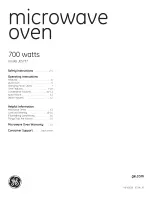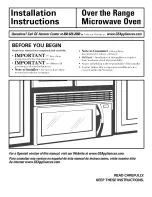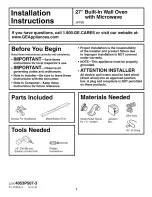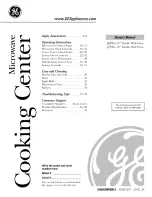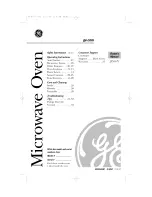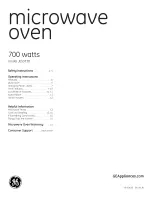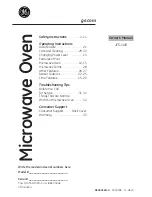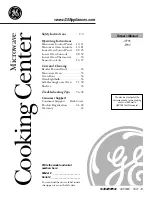
20
Convection
Broil
•
Thicker, tender,
cuts of meat,
poultry and fish.
•
DO NOT use
this mode for
browning breads
or casseroles.
•
Meats should
be at least 1”
thick.
•
No conversion
from
standard
Broil is necessary.
•
Refer to
Convection Broil
Chart in this
Manual for cooking
times.
Convection
Roast
•
Large, tender
cuts of meat
and poultry
such as roast or
whole chicken.
•
DO NOT cover
meat or use
cooking bags
•
Refer to
Convection
Roast Chart in
this Manual for
cooking times
•
Do NOT
change recipe
temperature
CONVECTION BAKE TIPS AND TECHNIQUES
Reduce recipe baking temperatures by 25°F (15°C).
•
For best results, foods should be cooked uncovered, in low-sided pans to take
advantage of the forced air circulation. Use shiny aluminum pans for best results
unless otherwise specified.
•
Heatproof glass or ceramic can be used. Reduce temperature by another 25°F
(15 °C) when using heatproof glass dishes for a total reduction of 50 °F (30 °C).
•
Dark metal pans may be used. Note that food may brown faster when using dark
metal bake ware.
•
The number of racks used is determined by the height of the food to be cooked.
•
Baked items, for the most part, cook extremely well in convection. Do not try to
convert recipes such as custards, quiches, pumpkin pie, or cheesecakes, which
do not benefit from the convection-heating process. Use the regular Bake mode
for these foods.
•
Multiple rack cooking for oven meals is done on rack positions 1, 2, 3, 4 and 5. All
five racks can be used for cookies, biscuits and appetizers.
•
2 rack baking: Use positions 1 and 3.
•
3 rack baking: Use positions 2, 3 and 4 or 1, 3 and 5.
•
When baking four cake layers
at the same time, stagger
pans so that one pan is not
directly above another. For
best results, place cakes on
front of upper rack and back
of lower rack (See graphic at
right). Allow 1” - 11/2” (2.5 -
3 cm) air space around pans.































